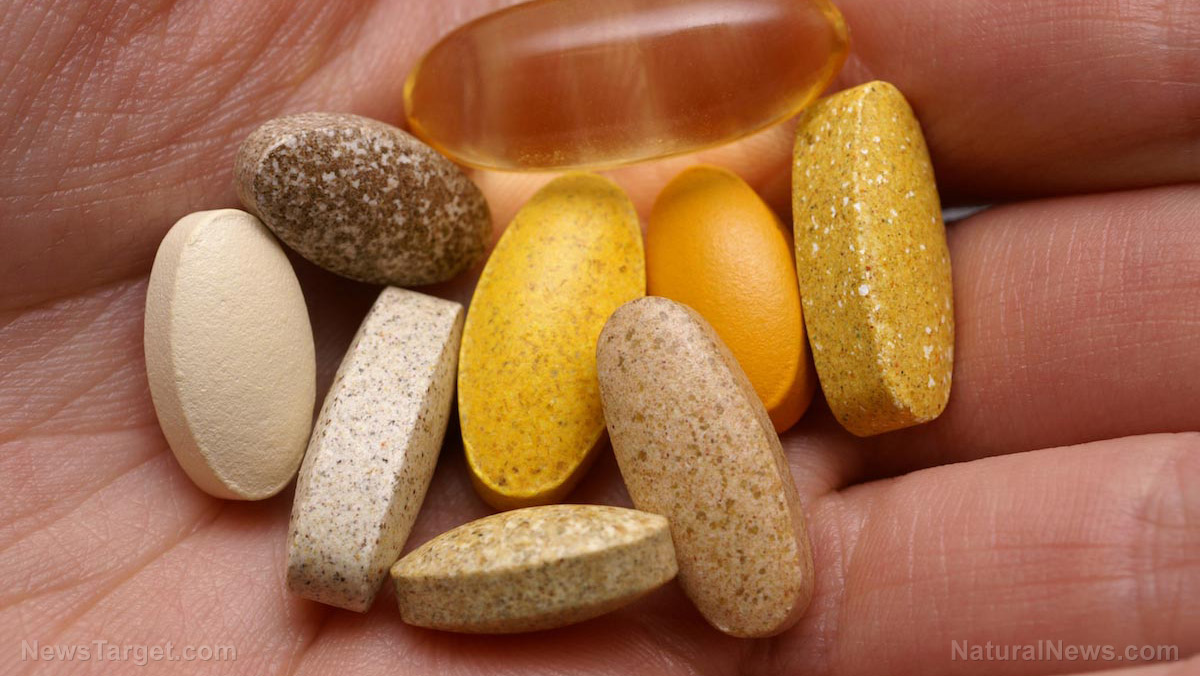Natural remedies for rheumatoid arthritis (RA): Use turmeric to relieve and prevent arthritis symptoms
02/07/2020 / By Cassie B.

Rheumatoid arthritis can be a challenging condition to manage. Many people suffer relentless joint pain and stiffness that can seriously limit their range of motion with this illness, and medication either doesn’t address the problem sufficiently or brings about too many unpleasant side effects to be worth taking. However, one natural treatment is gaining popularity as more and more people report experiencing relief without side effects: turmeric.
It almost sounds too good to be true: a relatively cheap and very common kitchen ingredient solving a problem that pricey meds with loads of research and development behind them can’t seem to conquer. And yet that’s exactly what many people are finding when they use this bright orange spice to deal with rheumatoid arthritis.
It makes sense when you think about it: The reason turmeric is used for so many different conditions is because of its anti-inflammation properties, and inflammation is at the heart of rheumatoid arthritis. As an autoimmune condition, it sees the body’s immune system attacking its own healthy joint tissue by mistake, leading to inflammation that damages the joints and bones nearby.
A systematic review conducted in 2016 found that taking 1,000 milligrams of curcumin, the active compound in turmeric, daily for 8 to 12 weeks can reduce arthritis-related pain and inflammation. In fact, the results suggested that curcumin might be just as effective as the non-steroidal anti-inflammatory drugs often given to patients for this condition, such as ibuprofen and diclofenac. Moreover, it brought about this relief without as many side effects; diclofenac, for example, is known for causing stomach trouble, among other side effects. However, it is worth noting that the studies included in the review were small, which means more research is needed to draw a more solid conclusion.
Nevertheless, a different study involving 36 rheumatoid arthritis patients who took a bioavailable type of curcumin for 90 days found that the compound led to significant improvements in inflammation and pain compared to a placebo group. Yet another study, this one using rat models, found that curcumin reduced redness and joint inflammation by blocking the mTOR pathway intracellular signaling process.
Finding relief with turmeric
While most doctors aren’t prescribing turmeric to their patients, you can reap the benefits on your own. You can find the herb in powder or whole root form in most grocery stores, and it is easy to add the powdered spice to soups, stews, curries, salad dressings and other dishes you’re already cooking. The fresh herb can be grated and used to brew an herbal tea. You can also find curcumin in supplement form, typically in capsules.
However, it’s important to note that curcumin has very poor bioavailability on its own, which means that it is not readily absorbed and used by the body. This can be remedied by taking it along with a small amount of black pepper, which contains a compound known as piperine that can enhance your body’s curcumin absorption by as much as 2,000 percent.
It can also be helpful to consume it with a good fat, like coconut oil or olive oil, as the spice is fat-soluble. In fact, turmeric has traditionally been consumed in India in the form of golden milk. This entails heating up milk, adding some turmeric and other spices as desired – such as ginger and/or cinnamon – and letting it simmer for around 10 minutes before straining and consuming. Don’t forget to add a pinch of black pepper!
It’s also worth noting that curcumin can also address other problems related to inflammation, including cancer, Alzheimer’s disease, multiple sclerosis, cardiovascular disease and diabetes. The potential benefits of turmeric are numerous, so stock up and start cooking with it!
Sources for this article include:
Submit a correction >>
Tagged Under:
arthritis, curcumin, food cures, food is medicine, functional food, inflammation, natural cures, natural medicine, pain relief, prevention, RA, remedies, rheumatoid arthritis, turmeric
This article may contain statements that reflect the opinion of the author
RECENT NEWS & ARTICLES
COPYRIGHT © 2017 NATURAL MEDICINE NEWS





















